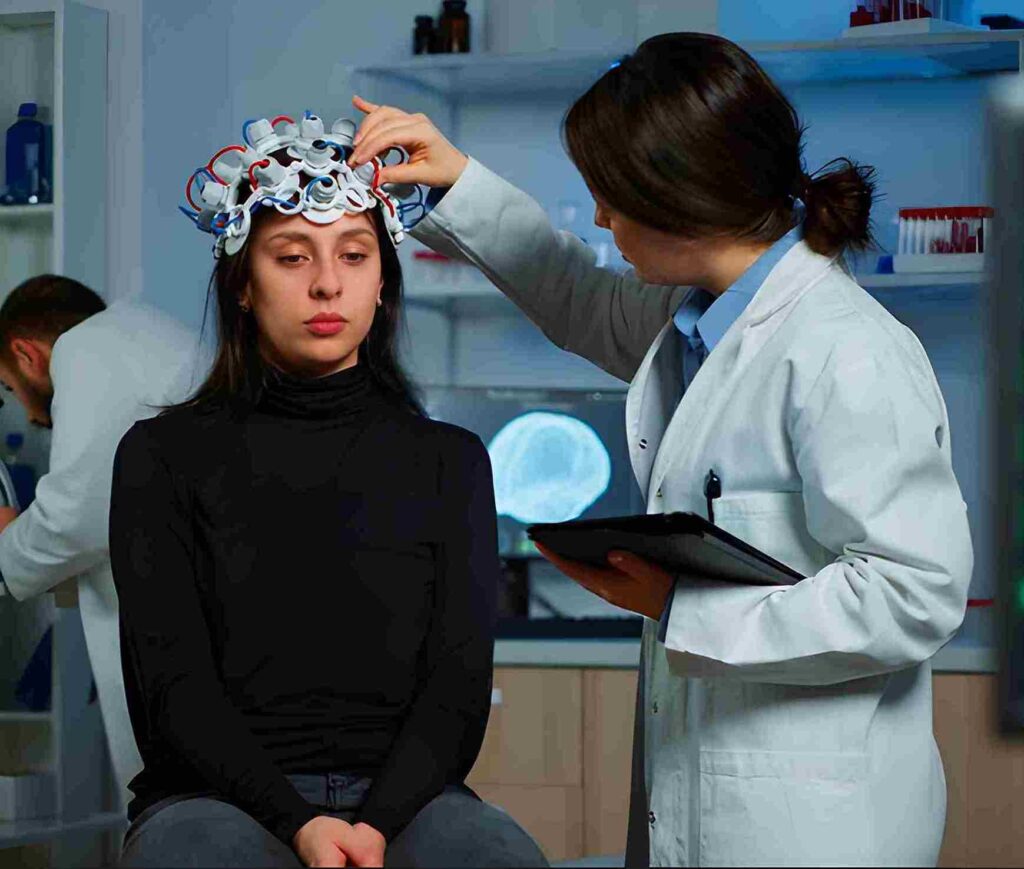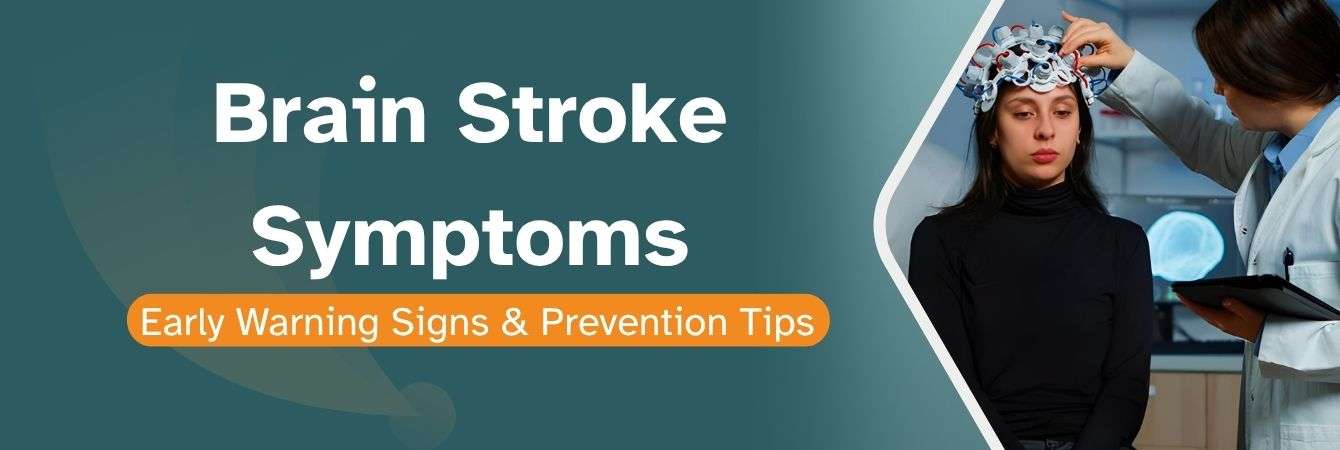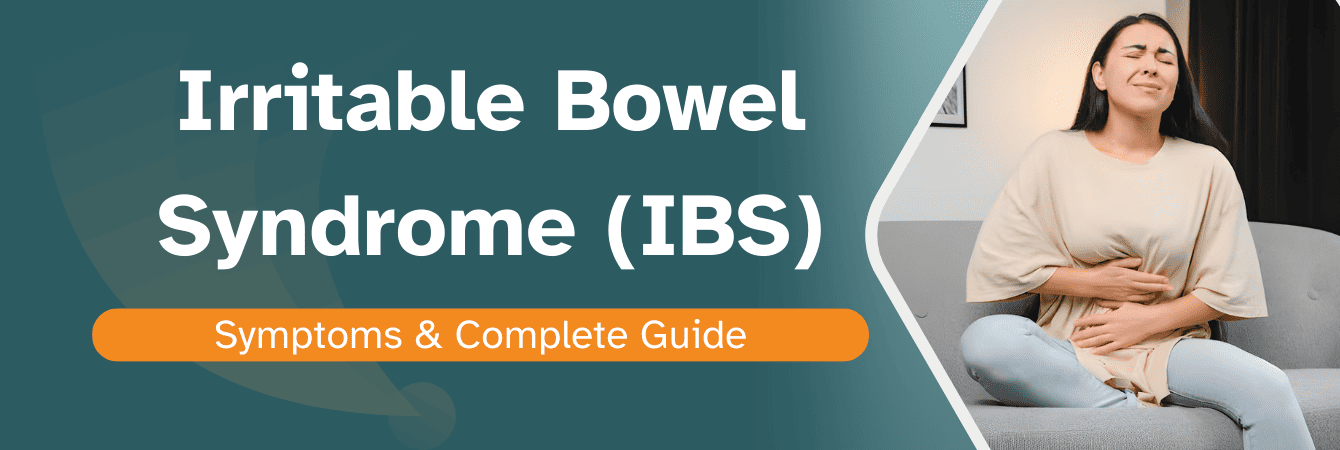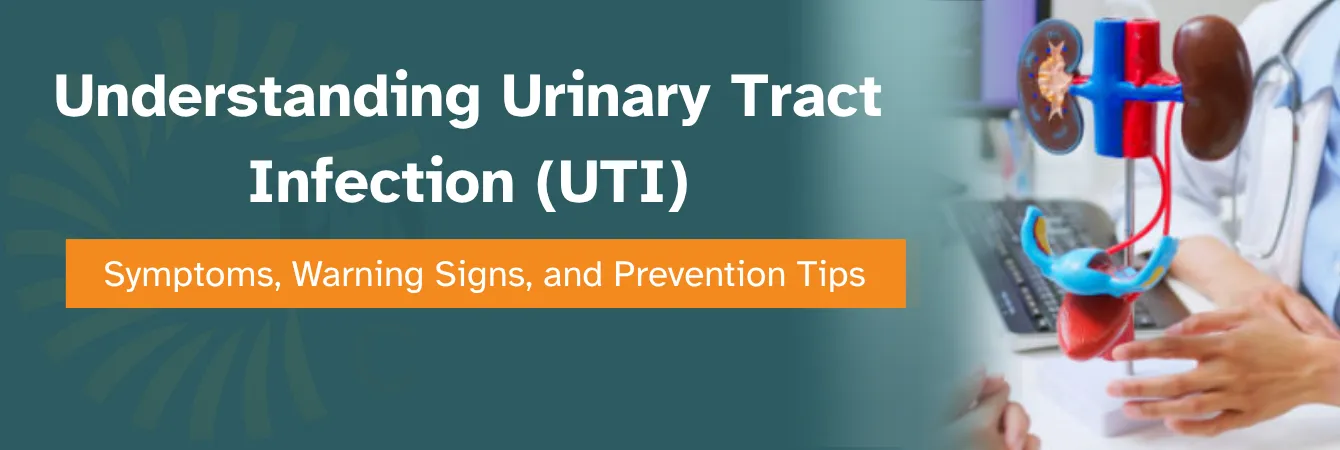Brain Stroke Symptoms: Early Warning Signs & Prevention Tips
- October 30, 2025
- Abrol Hospital
What Is a Brain Stroke?
A brain stroke occurs when blood flow to a portion of the brain is cut off or drastically reduced. Since brain cells rely on oxygen and nutrients carried by blood, any interruption can lead to cell death within minutes. Depending on which part of the brain is affected, a stroke can impact speech, movement, vision, memory, and even emotional control.
When a stroke happens, every second counts — doctors often say “time is brain,” meaning the longer treatment is delayed, the more brain cells are lost. Understanding how a stroke occurs is crucial for prevention and quick response in emergencies.
Types of Brain Strokes
Not all strokes are the same. Doctors classify them into three main categories based on their cause and impact on the brain.
1. Ischemic Stroke
An ischemic stroke occurs when a blood clot or fatty deposit blocks a brain artery. This blockage cuts off oxygen supply to a specific brain region, leading to tissue death. It accounts for about 85% of all stroke cases. People with high cholesterol, heart disease, or a history of smoking are more prone to ischemic strokes. Immediate medical intervention with clot-dissolving drugs can sometimes reverse the damage if done within the first few hours.
2. Hemorrhagic Stroke
A hemorrhagic stroke results from a burst blood vessel that causes bleeding in or around the brain. The leaked blood compresses brain tissue, damaging cells and increasing pressure within the skull. High blood pressure and aneurysms (weakened arteries) are common causes. This type of stroke is particularly dangerous and often requires emergency surgery to stop the bleeding and relieve pressure.
3. Transient Ischemic Attack (TIA)
Often called a mini-stroke, a Transient Ischemic Attack (TIA) is a temporary blockage that mimics a stroke but resolves within minutes or hours. Although symptoms disappear quickly, a TIA is a serious warning sign that a major stroke may follow soon. Treating the underlying cause after a TIA can prevent future, more severe strokes.
Common Causes of Brain Stroke
Understanding the root causes of a brain stroke can help you take preventive action. Most strokes are the result of unhealthy habits or untreated health conditions.
High Blood Pressure
The number one cause of stroke, hypertension, damages artery walls over time, making them more likely to rupture or clog. Regular monitoring and managing your blood pressure with medication, diet, and lifestyle changes can significantly reduce your stroke risk.
Diabetes
People with diabetes have higher levels of sugar in their blood, which can damage blood vessels and make them more prone to clotting. Proper sugar control through diet and medication helps reduce this risk.
Smoking and Alcohol
Smoking narrows the blood vessels and thickens the blood, making clots more likely. Excessive alcohol raises blood pressure and damages the liver, which also impacts blood flow regulation. Quitting smoking and limiting alcohol are two of the most effective ways to prevent stroke.
Obesity and Sedentary Lifestyle
Being overweight increases cholesterol levels, leading to plaque buildup in arteries. Lack of physical activity also weakens cardiovascular health. Incorporating daily exercise and maintaining a healthy weight helps keep your arteries clear and blood flow steady.
Early Brain Stroke Symptoms
Recognizing the early signs of a stroke can make a life-or-death difference. Symptoms usually appear suddenly and vary depending on which part of the brain is affected.
Sudden numbness or weakness: Often on one side of the body, especially in the face, arm, or leg.
Difficulty speaking or understanding speech: The person may slur words or be unable to find the right ones.
Vision problems: Blurred or double vision in one or both eyes.
Loss of balance or coordination: Sudden dizziness or difficulty walking.
Severe headache: An abrupt, intense headache without any clear cause can indicate a hemorrhagic stroke.
If you notice any of these symptoms in yourself or someone else, call emergency services immediately.
Apart from stroke-related conditions, certain rare infections like the brain-eating amoeba (Naegleria fowleri) can also affect the brain and lead to sudden neurological symptoms that require immediate medical attention.
The FAST Rule in Brain Stroke: Quick Way to Identify a Stroke
The FAST test is an easy and lifesaving way to identify a possible stroke.
F – Face: Ask the person to smile. Does one side of the face droop?
A – Arm: Ask them to raise both arms. Does one arm drift downward?
S – Speech: Is their speech slurred or strange?
T – Time: If any of these signs are present, it’s time to call emergency help.
The faster you act, the better the chance of recovery. Medical experts emphasize reaching a hospital within 3–4 hours of symptom onset for the best outcomes.
Prevention Tips for Brain Stroke
The good news is that most strokes are preventable with small, consistent lifestyle adjustments.
Monitor your blood pressure: Keep it under 120/80 mmHg if possible.
Adopt a balanced diet: Include whole grains, lean proteins, and fruits.
Exercise regularly: At least 30 minutes a day keeps your heart healthy.
Quit smoking: It improves circulation and lung health.
Limit alcohol: No more than one drink per day for women and two for men.
Preventing a stroke is about controlling your daily choices before they become medical emergencies.
Consult Our Expert Neurologist in Gurdaspur for Brain Stroke Treatment
If you or a loved one experience any symptoms of a brain stroke — don’t wait. Every minute counts when it comes to brain health. Visit Abrol Hospital, Gurdaspur, where our expert neurologists and stroke care specialists provide advanced diagnosis, emergency care, and personalized rehabilitation for faster recovery and better outcomes.
📞 Call us now or visit Abrol Hospital, Gurdaspur to get expert guidance and timely treatment for brain stroke prevention and recovery. Your brain deserves the best care — let us help you protect it.


Dr. Mukesh Vij
Specialties : Consultant Neuro & Spine Surgeon
FAQs About Morning Sickness during Pregnancy
Sudden weakness on one side of the body, slurred speech, blurred vision, or a severe headache are the most common signs.
TIA symptoms may last minutes to hours, while major stroke effects can persist for weeks, months, or permanently.
With early medical care and consistent rehabilitation, many people recover well, but some may experience lasting effects.
A heart-healthy diet rich in fruits, vegetables, nuts, fish, and whole grains with minimal salt and sugar is best.



